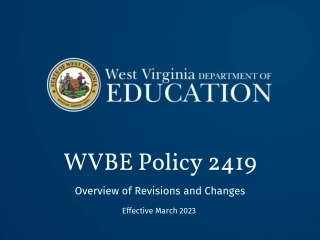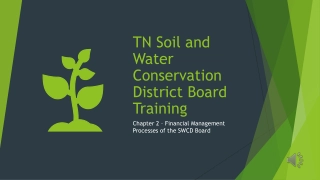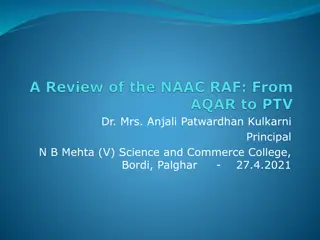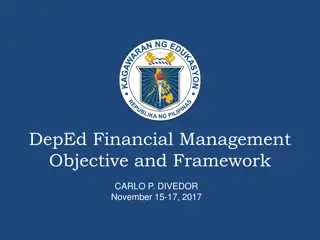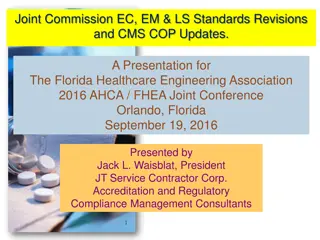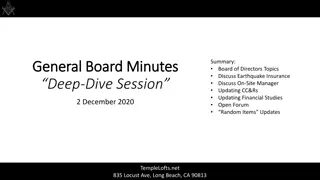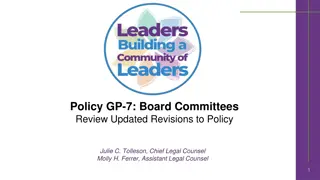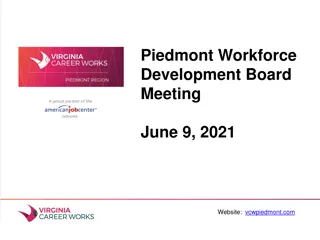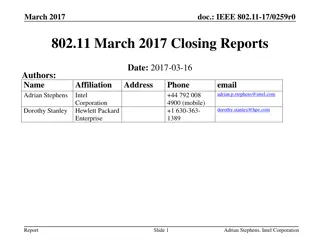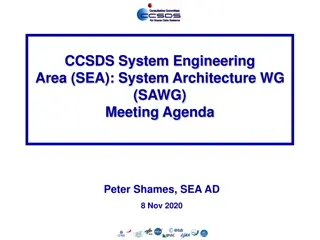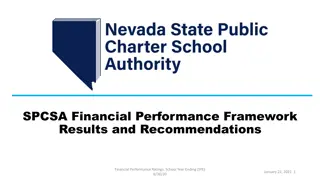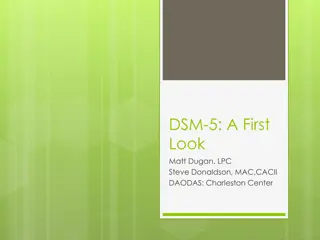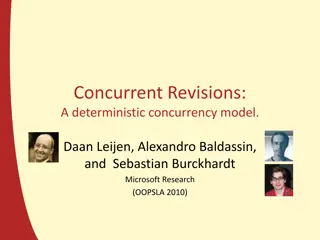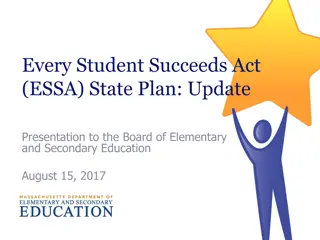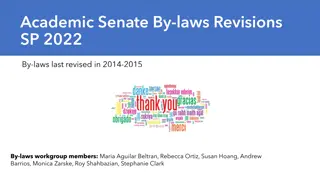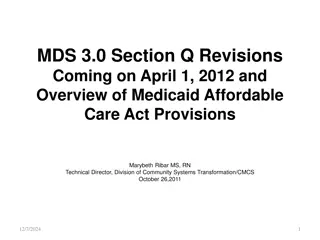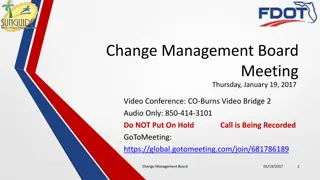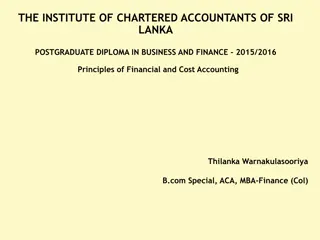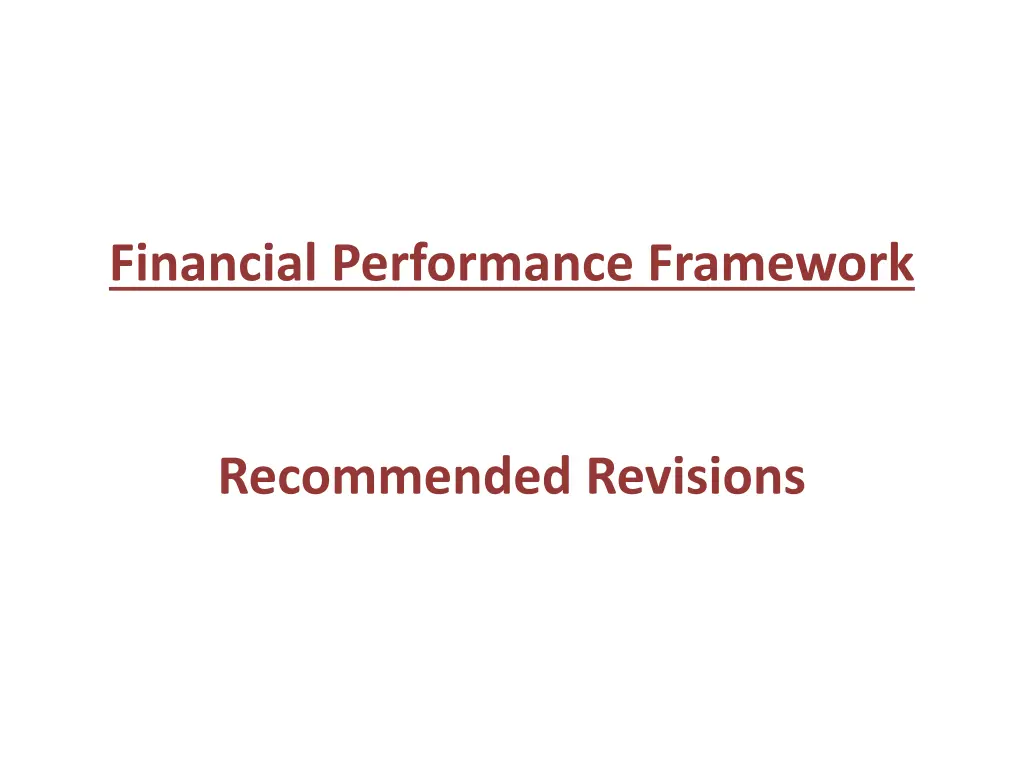
Financial Performance Framework Revisions for Charter Schools
Explore the recommended revisions for a financial performance framework used to measure the stability of charter schools sponsored by the School Partnerships for Charter School Assistance. Learn about the criteria, purpose for revisions, and specific measures like Debt Default and Debt to Asset Ratio.
Download Presentation

Please find below an Image/Link to download the presentation.
The content on the website is provided AS IS for your information and personal use only. It may not be sold, licensed, or shared on other websites without obtaining consent from the author. If you encounter any issues during the download, it is possible that the publisher has removed the file from their server.
You are allowed to download the files provided on this website for personal or commercial use, subject to the condition that they are used lawfully. All files are the property of their respective owners.
The content on the website is provided AS IS for your information and personal use only. It may not be sold, licensed, or shared on other websites without obtaining consent from the author.
E N D
Presentation Transcript
Financial Performance Framework Recommended Revisions
Financial Framework Criteria The Financial Performance Framework has four near term and four long term financial measures used to help measure the financial stability of our SPCSA sponsored charter schools. Criteria for these measures may differ for schools dependent upon how long they have been in operation. Schools in operation for more than two years Schools in operation for less than two years
Purpose for Financial Performance Revisions The current version of our Financial Performance Framework is dated 8-19-2014. Some criteria may not be defined well enough making it more subject to interpretation. Some criteria do not cover the full range of possibilities. Some criteria may contain holes or overlap causing the results to not meet any standard or meet multiple standards. Revisions are necessary to eliminate these discrepancies so there is one clear result for each financial measure.
Measure - Debt Default Current Standards Meets Standard: School is not in default of loan covenant(s) and is not delinquent with debt service payments Does Not Meet Standard: Not Applicable Falls Far Below Standard: School is in default of loan covenant(s) or is delinquent with debt service payments Current Issue: There is not a designation for schools that do not have a loan.
Measure - Debt Default (cont.) Revised Standard Meets Standard: School is not in default of loan covenant(s) and is not delinquent with debt service payments Or School does not have an outstanding loan Solution: Add an additional criteria for Meets Standard based on a school being in a better financial standing if it does not have a loan.
Measure - Debt to Asset Ratio Current Standards Meets Standard: Debt to asset ratio is less than 0.90 Does Not Meet Standard: Debt to asset ratio is between 0.90 and 1.0 Falls Far Below Standard: Debt to asset ratio is greater than 1.0 Current Issue: The criteria does not address the possibility of a Debt to Asset Ratio of 0.90 or 1.0 which would result in N/A.
Measure - Debt to Asset Ratio (cont.) Revised Standard Does Not Meet Standard: Debt to asset ratio is greater than or equal to 0.90 and less than or equal to 1.0 Solution: Revise the criteria to cover the complete range of possibilities.
Measure - Debt Service Coverage Ratio Current Standards Meets Standard: Debt service coverage ratio is equal to or exceeds 1.10 Does Not Meet Standard: Debt service coverage ratio is less than 1.10 Falls Far Below Standard: Blank Current Issue: There is not a designation for schools that do not have a loan. Also, this ratio cannot be calculated for schools that do not have a loan because all the required variables do not exist.
Measure - Debt Service Coverage Ratio (cont.) Revised Standard Meets Standard: Debt service coverage ratio is equal to or exceeds 1.10 Or School does not have an outstanding loan Solution: Add an additional criteria for Meets Standard based on a school being in a better financial standing if it does not have a loan.
Measure Total Margin Current Standards Meets Standard: Aggregated three-year total margin is positive and the most recent year total margin is positive, or Aggregated three-year total margin is greater than -1.5%, the trend is positive for the last two years, and the most recent year total margin is positive Note: For schools in their first or second year of operation, the aggregate total margin must be positive. Does Not Meet Standard: Aggregated three-year total margin is greater than -1.5%, but the trend is negative Falls Far Below Standard: Aggregated three-year total margin is less than -1.5%, or Current year total margin is less than -10%
Measure Total Margin (cont.1) Current Issue: criteria is either not defined well enough or excessively defined resulting in the possibility of meeting two standards or not meeting any standard. The criteria for Does Not Meet Standards does not clearly specify which trend (aggregated or annual) is being used leaving it subject to interpretation. The criteria references the aggregated three-year total margin which schools in their first or second year would not have three years of data to compute.
Measure Total Margin (cont.2) Revised Standards Meets Standard: Aggregated three-year total margin is positive and the most recent year total margin is positive Does Not Meet Standard: Aggregated three-year total margin is negative or the most recent year total margin is negative Falls Far Below Standard: Aggregated three-year total margin is negative and the most recent year total margin is negative Note: For schools in their first or second year of operation, substitute the aggregated three-year total margin with the aggregated total margin. Solution: Revise the criteria to a more simplistic language.
Measure Cash Flow Current Standards Meets Standard: Multi-year cumulative cash flow is positive and cash flow is positive each year. or Multi-year cumulative cash flow is positive, cash flow is positive in two of the three years, and cash flow in the most recent year is positive Note: For schools in their first or second year of operation, they must have a positive cash flow. Does Not Meet Standard: Multi-year cumulative cash flow is positive, but the trend is negative. Falls Far Below Standard: Multi-year cumulative cash flow is negative
Measure Cash Flow (cont.1) Current Issue: criteria is either not defined well enough or excessively defined resulting in the possibility of meeting two standards or not meeting any standard. The criteria for Does Not Meet Standards does not clearly specify which trend (cumulative or annual) is being used leaving it subject to interpretation. The criteria references the multi-year cumulative cash flow which schools in their first or year do not have multiple years of data to compute.
Measure Cash Flow (cont.2) Revised Standards Meets Standard: Multi-year cumulative cash flow is positive and the most recent year cash flow is positive Does Not Meet Standard: Multi-year cumulative cash flow is negative or the most recent year cash flow is negative Falls Far Below Standard: Multi-year cumulative cash flow is negative and the most recent year cash flow is negative Note: For schools in their first or second year of operation, substitute multi- year cumulative cash flow with the cumulative cash flow . Solution: Revise the criteria to a more simplistic language.
Conclusion The revisions are being recommended to help eliminate existing and potential discrepancies so there is one clear result for each financial measure.

